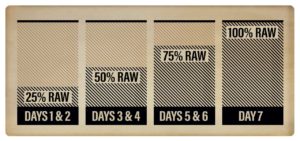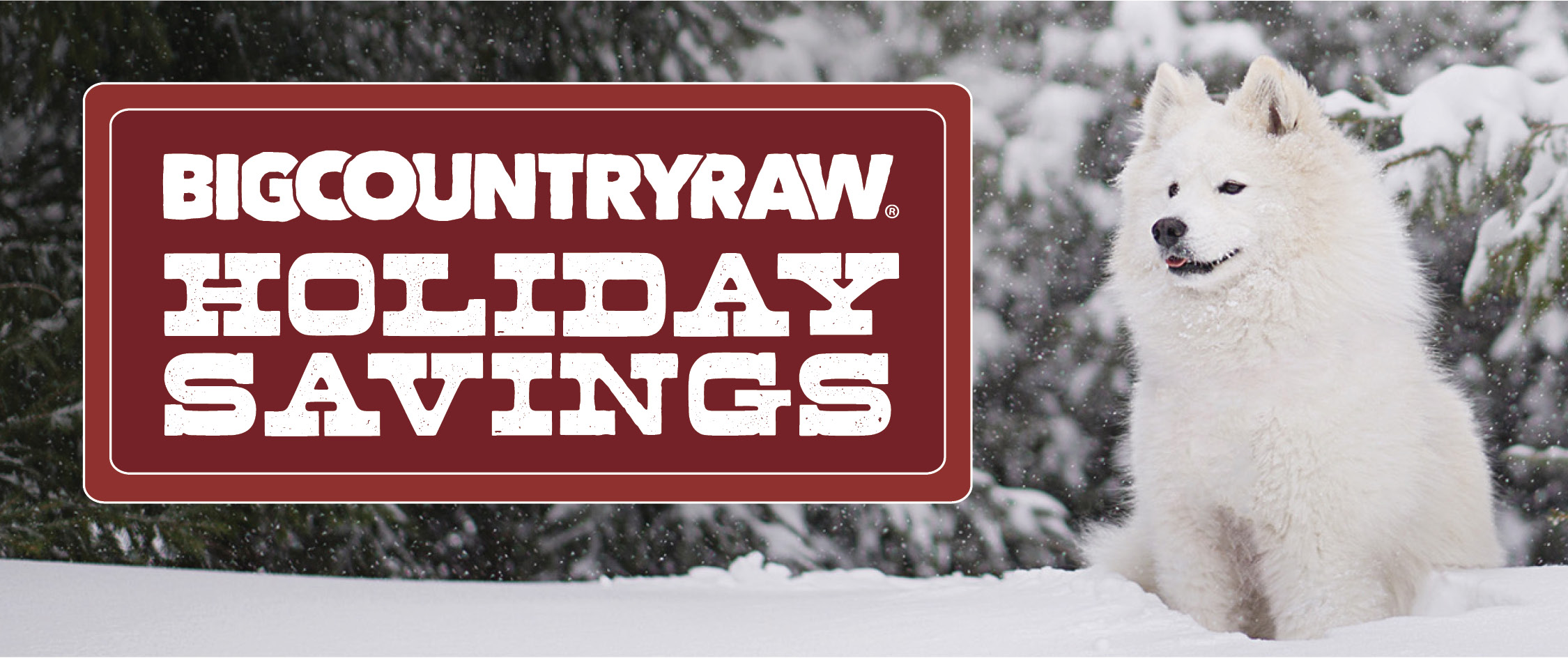We have successfully helped thousands of people with the transition! It’s easier than you think.
Find all the helpful information you will need to get started on feeding your dog or cat raw.
Successfully transitioning to a new raw food diet can take up to 3 weeks. There are significant differences in the digestive process and speed of digestion between raw and dry kibble. Raw meat and bone digest quicker than processed foods that are high in carbohydrates and preservatives.
WE RECOMMEND 2 METHODS TO TRANSITION FROM DRY FOOD TO RAW.

- Fast your dog for a period of 12 – 24 hrs.
- Start with a poultry protein such as Chicken, Turkey or Duck. Rabbit is also a great starting point. These proteins are often easier to digest, which will result in a quicker and easier transition.
- Serve the first raw meal at room temperature. Food that is icy cold from the refrigerator can cause your pet to vomit. Waiting for food to be warm also enhances the food aromas.
- Offer ½ the recommended serving. Wait 10 – 20 min. before offering remaining portion. This prevents over eager eaters from eating too quickly and regurgitating the food.
- Add a probiotic supplement such as Thrive ProGut or our Raw Goats Milk to help with digestion.
- Add Thrive Pumpkin Powder to meals to help ensure a firm and formed stool. Pumpkin is high in fiber, which assists in preventing digestive upset including loose stools (absorbs excessive water in bowels) or constipation (high fibre helps regulate bowels).


- Gradually over a period of 5 – 10 days beginning to replace the current dry food diet with raw.
- Start with a poultry protein such as Chicken, Turkey or Duck. Rabbit is also a great starting point. These proteins are often easier to digest, which will result in a quicker and easier transition.
- Serve the first raw meal at room temperature. Food that is icy cold from the refrigerator can cause your pet to vomit. Waiting for food to be warm also enhances the food aromas.
- Add a probiotic supplement such as Thrive ProGut or our Raw Goats Milk to help with digestion.
- Add Thrive Pumpkin Powder to meals to help ensure a firm and formed stool. Pumpkin is high in fiber, which assists in preventing digestive upset including loose stools (absorbs excessive water in bowels) or constipation (high fibre helps regulate bowels).
After the switch
During the transitional phase into a raw food diet, the first 7 – 14 days, your pet may experience some digestive upset including gas, loose stools, mucous in stool, and may even vomit bile (yellow or white phlegm).
Here’s Why:
- The enzymes required to break down a high quality protein, raw meat and bone diet vs a high carbohydrate and processed diet are very different. The pancreas has to adapt to both the type and of enzymes it produces. Adding Raw Goats Milk or a digestive enzyme to your dogs first raw meals can make this transition easier.
- The amount of bile required to break down raw food is substantially less because the food is 65% – 75% moisture. A dry food diet must be rehydrated before it can be digested, and the excessive amounts of bile in the gut help with this. Once you introduce a raw diet, your dog or cat may vomit bile as their stomach has not yet made adjustments to the amount of bile required for proper digestion. This is often temporary. Offering a dry cookie or treat can help settle the stomach if you notice your pet feels nauseous.
- Dry food expands to 2x – 5x its size during digestion. This process stretches the gut and gives your pet a full sensation. Switching to a raw diet will mean a higher calorically dense diet, but with less volume. You may notice that your pet seems hungrier sooner (as the food digests quicker) and your pet may be asking for food more frequently (as they don’t get that full sensation). The stomach will adjust and these sensations will be less noticeable in 7 – 10 days time.
-
The gut flora (bacteria and enzymes) are different for dogs and cats fed a high carbohydrate-based diet vs. a high protein, raw meat and bone diet. It may take several weeks for your pet’s digestive flora to adjust. During this phase your pet may experience some excess gas, and may even feel nauseous.
Your pet’s stomach pH will change, as a high carbohydrate diet results in a more alkaline environment. As the stomach adjusts, it will create a strong stomach acid to break down foods quicker. This is healthier and more natural for your pet.

